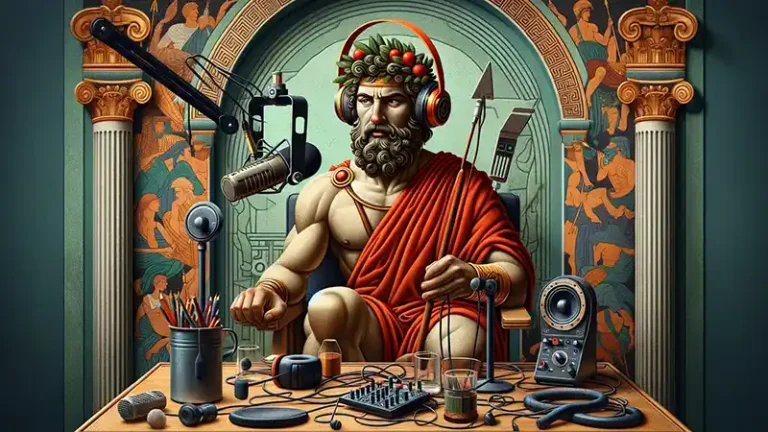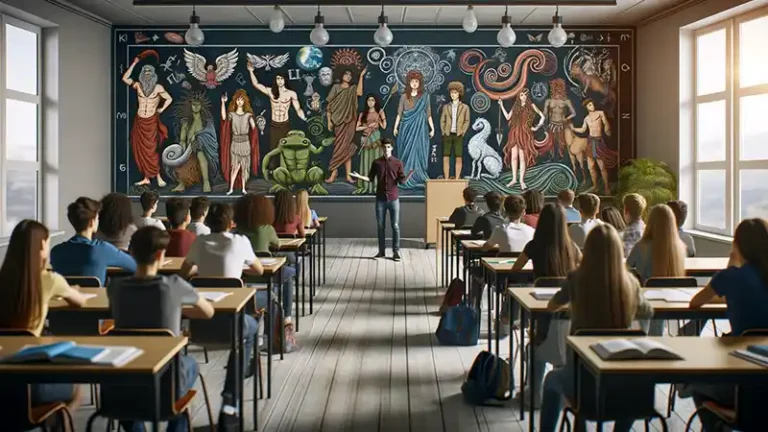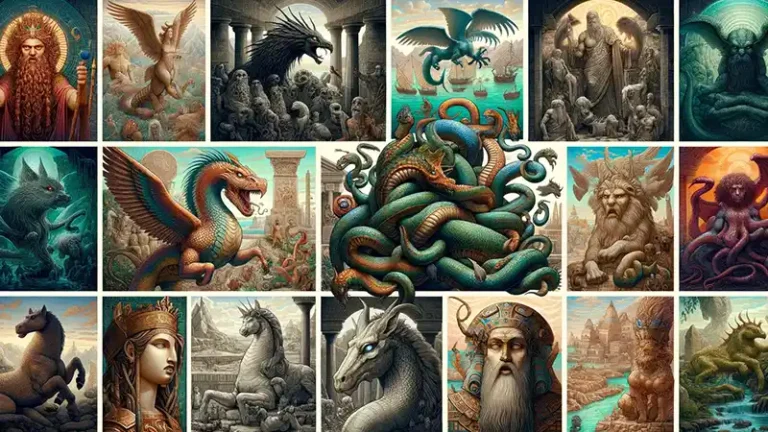Creative Greek Myth Flash Fiction Lesson Plan
As educators, we constantly seek innovative ways to engage our students in the learning process, blending classical education with modern methodologies. This lesson plan is designed to take your students on a creative journey, creating Greek mythology flash fiction stories. This multidisciplinary approach not only nurtures students’ creativity and writing skills but also deepens their understanding of ancient cultures and their lasting influence on contemporary narratives.
Learning Goals
- I will be able to apply elements of Greek mythology to modern storytelling.
- I will be able to develop complex characters and settings inspired by mythological elements.
- I will be able to effectively use a plot diagram to structure a flash fiction story.
- I will be able to critically analyze and provide constructive feedback on peer writing.
Materials
Flash Fiction Toolbox
Student Instructions
Plot Diagram
Peer Editing Worksheet
- Electronic Device for writing and using the Greek Mythology / Flash Fiction AI Assistant, Mnemosyne.
Process
- Review and Preparation: Begin by reviewing the flash fiction toolbox to refresh students’ understanding of the genre.
- Provide students with the instructions and assessment information.
- Task Introduction: Explain the assignment, focusing on the integration of Greek mythology into flash fiction stories. Emphasize that these stories can extend beyond the confines of traditional myths.
- Plot Organization: Distribute plot diagrams to assist students in structuring their stories.
- Mnemosyne Introduction: Introduce Mnemosyne, the AI assistant that will aid in exploring Greek mythology and flash fiction concepts.
- Drafting: Allocate time for students to write their rough drafts.
- Peer Editing: Conduct a peer editing session where students use the provided worksheets to give and receive constructive feedback on their drafts.
- Revision: Allow time for students to revise their stories based on the feedback received and their own reflections.
- Final Drafts: Set aside a session for students to finalize their flash fiction pieces, ensuring they meet the project criteria.
Student Instructions
- Hero’s Journey Elements: Incorporate key elements of the hero’s journey into your story. Given the brevity of flash fiction, it’s acceptable to skip some stages, but ensure that your story reflects the essence of a hero’s journey.
- Greek Mythology Inspiration: Your story must include elements from Greek mythology. This can involve characters, settings, themes, creatures, gods, or any mythological aspect. Be creative in how you blend these elements into your story.
- Word Limit: Your flash fiction should be no more than 1,000 words. It’s important to tell a complete, engaging story within this constraint.
- Character Development: Even though the story is short, strive for meaningful character development. Your protagonist should undergo some form of change or realization, typical of a hero’s journey.
- Conflict and Resolution: Ensure that your story has a clear conflict and a resolution. This conflict can be external (against monsters, gods, etc.) or internal (personal struggles, moral dilemmas).
- Originality and Creativity: While using familiar elements from Greek mythology, aim for originality in your narrative. Think about unique combinations or new twists on classic myths.
- Editing and Refinement: After writing your draft, spend time editing and refining your story. Focus on clarity, pacing, and maintaining the essence of both the hero’s journey and the mythological elements.
Assessment
Adherence to the Flash Fiction Format (5 points)
Word Count Compliance: Does the story comply with the specified word limit? (Maximum 1000)
Brevity and Efficiency: Are the ideas and narrative conveyed effectively within this limit?
Incorporation of Greek Mythology
Integration: How effectively does the story incorporate elements of Greek mythology?
Relevance: Are the mythological elements relevant and meaningful to the story?
Characterization (5 points)
Development
Are the characters, possibly inspired by mythological figures, well-developed within the word limit?
Do they have depth and complexity?
Authenticity
Do the characters behave and interact in a way that is believable, and consistent?
Plot and Conflict Using Plot Diagram (5 points)
Clarity and Structure
Is there a clear, engaging plot following the hero’s journey?
Does the story adhere to the classic narrative arc (exposition, rising action, climax, falling action, resolution)?
Conflict
Is there an evident, engaging conflict or challenge inspired by or related to Greek mythology?
Is this conflict resolved or addressed in a way that is satisfying and aligns with the plot diagram?
Setting and Atmosphere (5 points)
Immersiveness
Does the story create a vivid and engaging setting, possibly drawing from mythological elements?
Does the atmosphere contribute to the overall mood and theme?
Relevance
Is the setting integral to the story, enhancing the narrative?
Language, Style, and Mythological Elements (5 points)
Creativity and Integration
Does the language show creativity and careful choice of words, particularly in integrating mythological themes?
Are stylistic elements used to enhance the mythological aspects of the story?
Flow and Clarity
Is the writing clear, coherent, and easy to follow, maintaining a balance between storytelling and mythological references?
Mnemosyne, the Greek Mythology and Flash Fiction Assistant
Ask Mnemosyne questions about Greek mythology, creating flash fiction, and how to integrate elements of Greek mythology into your story.






